Duncan Green's Blog, page 156
September 23, 2015
Low-fee private schooling: Prachi Srivastava responds to The Economist (ICYMI + other summer posts on private sector & development)
Continuing the catch-up series for those who’ve been away/not been receiving email notifications, the 2nd most  read post from the last 3 months was this great response to a particularly one sided Economist piece.
read post from the last 3 months was this great response to a particularly one sided Economist piece.
Prachi Srivastava is one of the experts on ‘low-fee private schooling’ who was interviewed for last week’s remarkably one sided Economist Paean to the Private (my words not hers). She wants to set the record straight.
I have been researching low-fee private schooling for nearly a decade and a half. In fact, the term did not exist until I coined it.
The first time I dared to speak about low-fee private schooling at an international academic conference in 2004 I was told, not-so politely and somewhat patronisingly, to hush-up. We had more pressing Education for All goals to worry about.
‘But, what about the parents making sacrifices to send their kids to these schools?’, I asked. What about states that secretly support them to show increased universal primary education numbers? (Support is less secret now in countries like India, Pakistan, and Uganda). And shouldn’t we be researching this so that we know more about issues like relative achievement, equity implications, and wider impacts on education systems?
‘There, there, dear. They’re only a fraction of total provision. It’ll work itself out.’
If at that time, I had suggested that a donor agency like DFID (and perhaps others toying with the idea) would use public monies to fund corporate-backed private school chains, I probably would have been led out in a straitjacket.
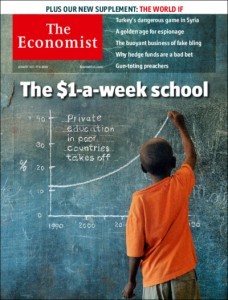 But, nearly 15 years later, here we are, and I’m more worried now than I was when I started this work. Why? Because even though we have more evidence than before (albeit concentrated in a handful of countries, i.e., mainly India and Pakistan in South Asia and Ghana, Nigeria, Kenya, and Uganda in sub-Saharan Africa), broader discussions and policy action do not reflect the literature.
But, nearly 15 years later, here we are, and I’m more worried now than I was when I started this work. Why? Because even though we have more evidence than before (albeit concentrated in a handful of countries, i.e., mainly India and Pakistan in South Asia and Ghana, Nigeria, Kenya, and Uganda in sub-Saharan Africa), broader discussions and policy action do not reflect the literature.
Or worse yet, certain evidence gets filtered out. I recently experienced this first-hand when I was interviewed for a cover story and briefing on low-fee private schooling by The Economist (which, as the briefing notes, is 50% owned by Pearson, which in turn has stakes in Omega Schools and Bridge International Academies school chains). After nearly a two-hour interview, in which I took great pains to describe the nuances of the evidence on affordability, achievement, and the development of the sector, I was dismayed by the certainty of claims on the superiority of private provision.
Maybe this was because the lovely journalist who interviewed me and others, did not ultimately write the piece? Notes got garbled or mixed? Maybe not? Others, like Diane Ravitch, believe it’s because of the publication’s ideological stance.
Who knows? But, the fact is, in an age of quick fixes and silver bullets we are uncomfortable with long gestation periods for evidence to mature. We are uncomfortable with shades of grey. But like it or not, it’s complicated.
The low-fee sector: All things to all people?
I used the term, ‘low-fee private schooling’ for my academic study in India to operationalize what seemed to me at the time, a nebulous set of independently-owned and -operated private schools, financed wholly or nearly exclusively by user fees, and claiming to serve socially and economically disadvantaged groups. ‘Low-fee’ referred to schools that charged a maximum monthly tuition fee not exceeding the rate a daily wage labourer earned in a day. This worked out to around Rs. 70/month in rural Lucknow District and Rs. 100/month in urban Lucknow at the time.
Crucially, the term ‘low-fee’ was not used to mean fees would be considered ‘low’ by all, especially by the poorest of the poor — just that they charged tuition fees at a level lower than the more typical elite private schools we were familiar with at the time. This distinction is lost in much of the subsequent research, and many initiatives do not specify what they mean by ‘low-fee’.
This is true of the Pearson Affordable Learning Fund’s (PALF) portfolio. Nowhere does PALF state what constitutes the cut-off for an affordable learning investment. A cursory look at the published fees and costs charged by PALF’s investments in school chains showed that in March 2015 these amounted to about 62% of the income of one adult worker earning the lowest official wage in South Africa (SPARK Schools), 41% for Omega Schools in Ghana, and 8% for Bridge in Kenya.
A note of caution — any economist worth their salt will question these figures, and so they should. Fees are not

Rural low-fee private school in Lucknow District, Uttar Pradesh, India
reported consistently, and not all school costs are accounted for. We can also debate how to calculate proportional costs and household schooling expenditure — and people much better-versed than me should engage in this (if you’re interested contact me!). The point is that we need to be explicit about what we mean when we refer to ‘low-fee’, ‘low-cost’, or ‘affordable’ schooling.
So what do we know?
What does the research say? Does low-fee private schooling really offer the best chance for the ‘poor’?
Here are some (unavoidably simplified) findings based on a global review I conducted of the research. The review covered countries such as Ghana, India, Kenya, Malawi, Nigeria, Pakistan, Uganda, and others.
Affordability: Affordable for whom?
Affordability is not a one-time event. For the most disadvantaged households and daily wage earners, it is linked to insecurities related to seasonal migration for work, health (including orphaning due to AIDS), rising costs of food, among other issues. Furthermore, daily wage earnings are volatile, and most households have more than one child to school.
Evidence shows that the most insecure households, including those in Tooley and his team’s research in India and Nigeria (well-known private school advocate and co-founder of Omega Schools in Ghana, Beautiful Tree Trust schools in India, and the ancillary service provider Empathy Learning Systems in India), and most daily wage households cannot afford the ‘low’ fees charged. Furthermore, fees and costs are not the same thing. Tuition fees only constitute one part of the total out-of-pocket costs, which also include books, transportation, testing fees, uniforms, etc. Initial estimates across the literature show these can run anywhere from 3% to 30% of household income per child depending on the context.
In the face of all this, those who can, bargain or negotiate lower fees. In cases where those parents are successful, schools acquiesce because they don’t want to lose clients, since having a full school projects an image of popularity that, in turn, helps to attract more clients.
Of course, not all parents are successful. And those who aren’t, exit — usually to the state sector.
Equity: Who gets to go, and who gets left out?
 Given the full costs of low-fee private schools, most disadvantaged households have to make difficult decisions about whom to send. This choice most often favours boys (also evident in Tooley and Dixon’s research in India) and aggravates gender inequities. Children from ethnic minority, lower-caste groups, and the bottom-20%-earning households have limited access (e.g., Härmä’s work in India).
Given the full costs of low-fee private schools, most disadvantaged households have to make difficult decisions about whom to send. This choice most often favours boys (also evident in Tooley and Dixon’s research in India) and aggravates gender inequities. Children from ethnic minority, lower-caste groups, and the bottom-20%-earning households have limited access (e.g., Härmä’s work in India).
Children disadvantaged by location also tend to get left out. Emerging work in India, where there is relatively more literature, shows that private schools tend to be in urban and rural areas that have relatively better public infrastructure (e.g. access to roads, electricity) (e.g., Woodhead et al’s longitudinal analysis; Pal’s work in rural areas). Private schools do not tend to reach children living in the poorest or most difficult-to-reach areas (e.g. Govinda and Bandhyopadhyay), and if they do, they are not sustainable over time. If these children have longer-term access to a school, it tends to be to a state school.
Quality: Are low-fee private schools really better?
The full portfolio of evidence is inconclusive.
On achievement: No study shows a universal private school advantage for every group of private school student, in every subject, across all contexts. Furthermore, private school advantage, where it exists, tends to diminish or disappear when background characteristics are controlled for. This is also evident in Tooley and his team’s research in India and Kenya, and in a randomized control trial, often dubbed the ‘gold standard of research’, in Andhra Pradesh, India by Muralidharan and Sundararaman. In some instances, as the 2009 ASER results showed, there was a negative effect of private school attendance on learning levels in local language. Crucially, as the DFID rigorous review found, studies show low attainment overall in government and private sectors. Impacts on higher order skills, like creativity and critical thinking, are not known.
On inputs: Evidence is mixed regarding school infrastructure. Low-fee private schools are better than state  schools on some inputs, and worse on others. But overwhelmingly, studies show that the main way low-fee private schools keep costs ‘low’ is to hire unqualified, short-term contract teachers and pay them extremely low wages, sometimes below the minimum wage. The key is primarily to recruit teachers who are young, local women since they are ‘the cheapest source of labor’, as Andrabi et al. state regarding their work in Pakistan. This raises serious broader issues about the para-skilling of teachers and the potential exploitation of the female labour market, particularly in contexts where teaching is one of the only viable jobs for young women.
schools on some inputs, and worse on others. But overwhelmingly, studies show that the main way low-fee private schools keep costs ‘low’ is to hire unqualified, short-term contract teachers and pay them extremely low wages, sometimes below the minimum wage. The key is primarily to recruit teachers who are young, local women since they are ‘the cheapest source of labor’, as Andrabi et al. state regarding their work in Pakistan. This raises serious broader issues about the para-skilling of teachers and the potential exploitation of the female labour market, particularly in contexts where teaching is one of the only viable jobs for young women.
On official recognition as a quality marker: In most countries, private schools are meant to go through a process of recognition once they meet basic standards or quality norms. This is supposed to be a mark of baseline quality. However, studies in India (Ohara; Srivastava; Tooley and Dixon), Kenya (Stern and Heyneman), Nigeria (Härmä and Adefisayso; Rose and Adelabu), and Pakistan (Humayun et al.) find low-fee private schools may gain recognition through corruption and bribery. Delayed inspections, lost forms, postponed committee meetings, cumbersome paperwork, and complex land registration requirements, prompt many owners to pre-emptively open their schools without recognition, operate underground, or bribe officials without meeting set norms. This further undermines the education sector as a whole.
The growth of the low-fee private sector has been widely attributed to dysfunctional state schools. But state failure should not be tacitly accepted, certainly in light of the evidence. The fact remains that the majority of the poorest, most disadvantaged children in poor countries continue to access dysfunctional state schools. And all of us, including the private sector, have a role to play in making sure they get better.
Prachi Srivastava (@PrachiSrivas ) is an Associate Professor in the School of International Development and Global Studies, University of Ottawa. For more visit www.prachisrivastava.com.
Other Summer Posts on Private Sector and Development
Unilever starts human rights reporting
How does Change Happen in global commodities markets? The case of Palm Oil
Impact investing: hype v substance, the importance of ownership and the role of aid

September 22, 2015
The Politics of Results & Evidence. Most read post from this summer (ICYMI)
OK, Oxfam’s IT whizzes finally seem to have fixed a really frustrating problem – several thousand people who had signed up for email alerts about new FP2P posts haven’t been receiving them for the last 3 months. Many of them assumed Oxfam had finally got round to sacking me and/or I’d got fed up with blogging/gone under a bus. Sorry to disappoint – I’ve been churning out posts all along. So for them (and those of you who have been on holiday), over the next couple of weeks I will re-post the most popular pieces from the last 3 months, plus links to other posts on similar topics, with the acronym ICYMI (In Case You Missed It).
The most widely read post for the whole period was actually a book review:
The Politics of Results and Evidence in International Development: important new book
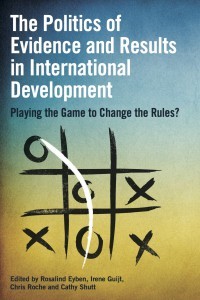
The results/value for money steamroller grinds on, with aid donors demanding more attention to measurement of impact. At first sight that’s a good thing – who could be against achieving results and knowing whether you’ve achieved them, right? Step forward Ros Eyben, Chris Roche, Irene Guijt and Cathy Shutt, who take a more sceptical look in a new book, The Politics of Results and Evidence in International Development, with a rather Delphic subtitle – ‘playing the game to change the rules?’
The book develops the themes of the ‘Big Push Forward’ conference in April 2014, and the topics covered in one of the best debates ever on this blog – Ros and Chris in the sceptics corner took on two gung-ho DFID bigwigs, Chris Whitty and Stefan Dercon.
The critics’ view is suggested by an opening poem, Counting Guts, by P Lalitha Kumari after she attended a meeting about results in Bangalore, which includes the line ‘We need to break free of the python grip of mechanical measures.’
The book has chapters from assorted aid workers about the many negative practical and political consequences of implementing the results agenda, including one particularly harrowing account from a Palestinian Disabled People’s Organization that ‘became a stranger in our own project’ due to the demands of donors (the author’s skype presentation was the highlight of the conference).
But what’s interesting is how the authors, and the book, have moved on from initial rejection to positive engagement. Maybe a snappier title would have been ‘Dancing with Pythons’. Irene Guijt’s concluding chapter sets out their thinking on ‘how those seeking to create or maintain space for transformational development can use the results and evidence agenda to better advantage, while minimising problematic consequences’. Here’s how she summarizes the state of the debate:
 ‘No one disputes the need to seek evidence and understand results. Everyone wants to see clear signs of less poverty, less inequity, less conflict and more sustainability, to understand what has made this possible. Development organizations increasingly seek to understand better what works for who and why – or why not. However, disputes arise around the power dynamics that determine who decides what gets measured, how and and why. The cases in this book bear witness to the experiences of development practitioners who have felt frustrated by the results and evidence protocols and practices that have constrained their ability to pursue transformational development. Such development seeks to change power relations and structures that create and reproduce inequality, injustice and the non-fulfillment of human rights.
‘No one disputes the need to seek evidence and understand results. Everyone wants to see clear signs of less poverty, less inequity, less conflict and more sustainability, to understand what has made this possible. Development organizations increasingly seek to understand better what works for who and why – or why not. However, disputes arise around the power dynamics that determine who decides what gets measured, how and and why. The cases in this book bear witness to the experiences of development practitioners who have felt frustrated by the results and evidence protocols and practices that have constrained their ability to pursue transformational development. Such development seeks to change power relations and structures that create and reproduce inequality, injustice and the non-fulfillment of human rights.
And yet some of these cases also recognize that the results agenda can, in theory, open up opportunities for people-centred accountability processes, or promote useful debates about value for money, or shed light on power dynamics using theory of change approaches. Some participants at the Big Push Forward event argued that greater emphasis on evidence has led to more intelligent consumption of data.’
Guijt identifies the success factors behind what you called call ‘really useful measurement’: the methods employed 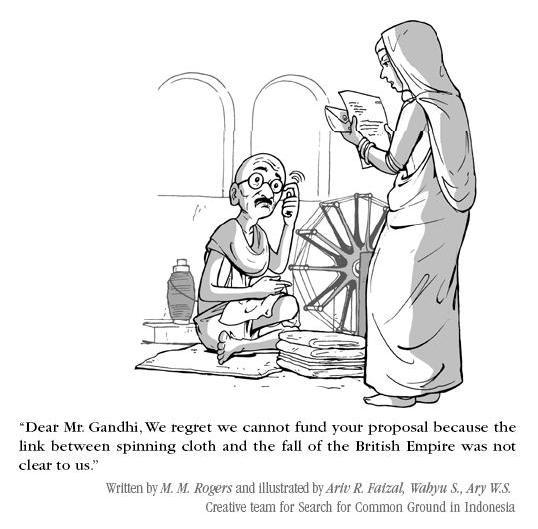 must be feasible, useful and rigorous, accompanied by autonomy and fairness, generate time and space for reflection on evidence of results, and agile. She goes on to explain the meaning of those rather motherhood and apple pie terms. A few excerpts:
must be feasible, useful and rigorous, accompanied by autonomy and fairness, generate time and space for reflection on evidence of results, and agile. She goes on to explain the meaning of those rather motherhood and apple pie terms. A few excerpts:
‘Particularly detrimental is the wasted effort invested in collecting incorrect or unused results data’. She argues that by contrast, ‘soft data’ can be particularly useful, such as programme managers personally listening to the views of children and young people.
What is Rigour?: ‘While much of the rigour debate focuses on whether data is rigorous, we should focus on seeking more rigorous thought processes and method selection and use … the term ‘rigour’ needs to be reclaimed beyond narrow method-bound definitions to encompass better inclusion of less powerful voices and improved analysis of power, politics, assumptions and resource allocation’.
‘Results and evidence approaches should strongly emphasize reflection about what is known and what needs further inquiry. Asking people to transcribe results data rather than making sense of that data is increasingly seen as an entrenched problem.’
She finishes by setting out a positive agenda of seven strategies
‘Develop political astuteness and personal agency’: ‘people’s ability to use the results and evidence agendas positively makes them activists within their organizations, and with funding agencies and partner organizations’
‘Understand dynamic political context and organizational values’: learn to advocate within your own organization
‘Identify and work with what is positive about the results and evidence agenda’: this is the meaning of the book’s subtitle ‘playing the game to change the rules?’
‘Facilitate front-line staff to speak for themselves’: always powerful as a results focus can technocratize issues and diminish the voices of those on the ground
‘Create space for learning and influence’
‘Advocate for collective action’ – the good guys need to work together to perform the kind of ju jitsu on the results agenda set out in the previous strategies
‘Take advantage of emerging opportunities’: don’t just complain; embrace new converts in the mainstream, despite their irritating habit of claiming that they of ‘doing development differently’ first……
Some previous posts on the measurement debate here, here and here
[Some insider gossip: Irene Guijt is taking over from Ricardo Fuentes as Oxfam GB Head of Research – v exciting]
And here are the other book reviews you may have missed
Aid and Development: A Brief Introduction. Book review of handy new bluffer’s guide
Embracing Complexity – a good new book on systems thinking (and action)
The Origins of Political Order: Review of Francis Fukuyama’s impressive history of the state
Fukuyama’s history of the State, Book 2: Political Order and Political Decay
Geek Heresy, by Kentaro Toyama: book review

September 21, 2015
Some cautionary thoughts on this week’s SDGs summit
 The crescendo of discussion and debate over the successor to the Millennium Development Goals reaches its climax this weekend in New York, with the Sustainable Development Summit. The Guardian has a good scene setter.
The crescendo of discussion and debate over the successor to the Millennium Development Goals reaches its climax this weekend in New York, with the Sustainable Development Summit. The Guardian has a good scene setter.
I’ve ploughed a contrarian furrow on the SDGs so far, so why stop now? Here are some things you might want to keep in mind over the next few days, with links to past FP2P posts on the issue.
First, who is ‘we’? You will hear hundreds of statements along the lines of ‘we can end poverty’. Great aim, but who, exactly is we? This from a great 2013 post by French development guru Pierre Jacquet:
‘It is altogether amazing how wishful and incantatory discussions on global issues have become. We seem to be content with passionate statements about what “we should”, “we need”, “we must” consider and do. Have we reached a sort of “end-of-History” development approach in which we believe that everyone agrees on some final objectives and we collectively know how to get there? Or is it, rather, that we try to exorcize our impotence and helplessness, while buying ourselves a conscience?’
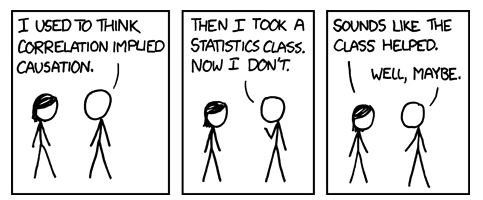 Second, there is remarkably little evidence that the MDGs achieved very much at national level, although globally they made the case for more aid and better data. This is probably the most ubiquitous example in international development of confusing correlation with causation – poverty has halved, well done MDGs! But most of that is down to China – are you really saying that Chinese decision makers leap out of bed every morning asking themselves ‘how can I achieve the MDGs’?
Second, there is remarkably little evidence that the MDGs achieved very much at national level, although globally they made the case for more aid and better data. This is probably the most ubiquitous example in international development of confusing correlation with causation – poverty has halved, well done MDGs! But most of that is down to China – are you really saying that Chinese decision makers leap out of bed every morning asking themselves ‘how can I achieve the MDGs’?
What is particularly baffling is that almost no serious research has been done to establish the truth about causation, for example, by a rigorous survey of developing country decision makers on which aspects of the international system influence their policies (asking ’are the MDGs a good thing?’ really doesn’t count). When Columbia University’s Elham Seyedsayamdost did so she got, from the UN’s point of view, the wrong answer. Surveying 50 countries’ implemention of the MDGs, she found that whether the goals were reflected in plans or not, they did not have any apparent influence on how governments spent their money.
Third, moving on to the SDGs, I have become increasingly alarmed over the last few years and wrote a bah humbug paper on this back in 2012. The discussion has been  dominated by a large group of UN technocrats debating metrics and indicators, and a huge panoply of NGO and other lobbyists, trying to shoehorn ‘their’ issue onto an ever-expanding agenda. At no point did anyone ask what kind of design might enable the SDGs to exert traction at national level – the acid test for me is ‘will a decision maker in Bihar or Dhaka or Kampala do anything differently because of the SDGs?’.
dominated by a large group of UN technocrats debating metrics and indicators, and a huge panoply of NGO and other lobbyists, trying to shoehorn ‘their’ issue onto an ever-expanding agenda. At no point did anyone ask what kind of design might enable the SDGs to exert traction at national level – the acid test for me is ‘will a decision maker in Bihar or Dhaka or Kampala do anything differently because of the SDGs?’.
Nor is anyone asking what lessons could be learned from the success or failure of hundreds of other global conventions and agreements (the ILO alone has 190 of them). One honourable exception is an ODI paper by Exfammer May Miller Dawkins on what lessons can be drawn from international human rights and environmental agreements.
It may be that once the goals are agreed, the discussion on implementation will fully address this problem, which would be great. But my fear is that the technocratic approach thus far will continue – lots of discussion on metrics and indicators, but not much attention to getting traction on national governments. Will, for example, each government sign up to report on their progress (or lack of it) every few years to a UN Committee, which (to prevent whitewash reporting ) is allowed to collect information from other sources such as UN bodies or NGOs, as in the UN Convention on the Rights of the Child? Nothing that I’ve heard suggests that will happen. See what I mean about learning from other instruments?
I hope I’m wrong. As Claire Melamed argues, the SDG process has generated a massive global conversation on our shared future and maybe that will continue. But I worry that ignoring power, politics and (dare I say it?) How Change Happens in New York this weekend will mean a global moment will not produce the long term impact we need. There’s that ‘we’ again. Sorry.

September 20, 2015
Links I Liked
[Welcome back email subscribers – and heartfelt thanks to the IT wizards who sorted out the glitch. More on this tomorrow]
The cartoonists are having a field day [h/t Helge Torvund]
 The Onion has a satirical go with an 11 step guide to how migrants reach Europe (step 6: Trudging; Step 10: Angela Merkel bestows each migrant with their new German name)
The Onion has a satirical go with an 11 step guide to how migrants reach Europe (step 6: Trudging; Step 10: Angela Merkel bestows each migrant with their new German name)
Fascinating, and v moving: refugees unpack the contents of their bags
‘You are Safe. The City of Vienna’. Sign in railway station [h/t Melissa Fleming]
In other news:
Owen Barder summarizes the case for making cash transfers the  default mode in humanitarian response & the findings of a high level panel on same
default mode in humanitarian response & the findings of a high level panel on same
Garment factories or marriage? Intriguing, charming film on choices facing young women in Bangalore
The best courtroom exchange ever….
This doesn’t apply to bloggers, of course: Don’t date journalists, warns China Daily – “They may be narcissistic, patronizing and find it hard to accept advice” [h/t Katrina Hamlin]

Avoid Mount Stupid, Also doesn’t apply to bloggers, obvs [h/t Raza Rumi]
OK, the Rugby World Cup has started, so please don’t expect me to do any work for a few weeks. First up, the evolution of the haka (Maori war dance performed by All Blacks before games): from silly to scary in just 90 years [h/t Chris Brooke]

September 17, 2015
How are disasters linked to inequality? Review of ‘The Disaster Profiteers’
[The IT guys tell me they’ve finally found a fix on the email notification problem. If you get an email about this post for the first time in months, please either leave a comment, or vote in the poll to the right, to tell us it’s working]
Debbie Hillier, Oxfam’s Humanitarian Policy Adviser reviews The Disaster Profiteers: How natural disasters make the rich richer and the poor even poorer, by John C Mutter
the rich richer and the poor even poorer, by John C Mutter
I really, really wanted to like this book. As someone who has worked on disasters for some time, in an organisation whose focus is inequality, this seemed like the perfect book.
The basic thesis is that whilst disasters affect everyone, rich countries and rich people are protected by their wealth and can even profit. Rich countries have more scientists, good early warning systems, better emergency response systems; in the aftermath, an elite few make out-of-sight decisions about rebuilding or not rebuilding, about who will benefit from the lucrative reconstruction contracts. Poor people live on marginal lands away from productive resources, are more likely to be in debt, do not have savings or insurance, and receive poor government support. They are politically, socially or economically excluded and hence have little access to resources, influence, information or decision-making power.
 This is not a new argument. Crises are times when change can happen – as expressed by Milton Friedman, and described very well in Naomi Klein’s powerful book, the Shock Doctrine, which argues that crises open the door to ‘disaster capitalism’ – private companies making good use of the chaos for their own commercial benefit, grabbing money and power.
This is not a new argument. Crises are times when change can happen – as expressed by Milton Friedman, and described very well in Naomi Klein’s powerful book, the Shock Doctrine, which argues that crises open the door to ‘disaster capitalism’ – private companies making good use of the chaos for their own commercial benefit, grabbing money and power.
The book contains some very well-drawn and thought-provoking descriptions of the impact of specific cyclones, earthquakes and tsunamis, and there are also some interesting ideas in here:
The book challenges our assumption that disasters are always a bad thing by introducing the idea of Schumpeter’s ‘gale of creative destruction’ – whereby disasters destroy old inefficient capital, clearing the ground for new and better capital, and forcing technology upgrades. And there are examples of this. But this clearly overlooks the human cost and really only benefits the rich. And even where this does happen, surely there is an opportunity cost?
There are surprising parallels between the official response to Cyclone Nargis in Myanmar (a poor country with a military junta) and Hurricane Katrina in the US (a rich country with a democratic government). In both cases, the authorities downplayed the scale of the event, with inaction stemming from a deadly mixture of indifference, incapacity, and fear. Then they acted defensively, concerned more about mitigating political and reputational damage, and in Katrina’s case, using the social unrest to deflect from bad government performance. But whilst Nargis was unusual, hurricanes regularly hit the southern US states and there was no forecaster’s error on Katrina. The real cause of that disaster was much more to do with inequalities, racism and poor disaster risk reduction.
The corruption-disasters link is well made. Corruption in the building industry is the leading cause of earthquake mortality, particularly in South Asia, where building codes are violated and inspectors are paid to look the other way. ‘Yes, buildings collapse because they are poorly built, but to say buildings kill people is like saying that guns kill people, when it is people with guns in their hands who kill people.’
Technical appendices show how a disaster’s economic impact depends on how fast or slow the economy is growing. Surprisingly, robustly growing economies – such as India or Brazil – might be the most vulnerable to disasters.
My main frustration with the book was the lack of long term analysis. The book makes the point that the media focus is only on the disaster whilst it is more important to focus on what happens before and after the event, which is absolutely true. So why is there so little in the book on the long term impacts of disasters? The one exception is Hurricane Katrina, where the author draws on a vast literature of analysis to show that it is the wealthier – and whiter – neighbourhoods and businesses that are thriving in New Orleans; the poorest, and mostly African-American, areas of town remain vacant.
is only on the disaster whilst it is more important to focus on what happens before and after the event, which is absolutely true. So why is there so little in the book on the long term impacts of disasters? The one exception is Hurricane Katrina, where the author draws on a vast literature of analysis to show that it is the wealthier – and whiter – neighbourhoods and businesses that are thriving in New Orleans; the poorest, and mostly African-American, areas of town remain vacant.
To really prove (or not) the link between inequality and disasters, what is needed is more study of disaster areas 3 or 5 years on. For example, six months after the 2010 Haiti earthquake, rich people had started to recover, whereas the poorest people were still losing assets and getting poorer – suggesting increasing inequality. Yet national inequality rates didn’t change between 2001 and 2012, and actually fell slightly in urban areas – so maybe the earthquake didn’t deepen inequality? What we need is the full picture of the recovery process over several years – who benefited, who didn’t, and how can we ensure that lessons are learned so that the disasters and development communities can design recovery processes that specifically improve equality.
And please, please, can we all stop using the phrase ‘natural disasters’ – the hazard is natural, but – as this book describes very well – the disaster is very much man-made.

September 16, 2015
What are the key principles behind a theory of change approach? Top new ODI paper.
Craig Valters of ODI is consistently incisive on Theories of Change, cutting through the flannel surrounding one of the

I don’t care, I really like it
aid business’ favourite new(ish) fuzzwords to identify what is genuinely significant. His new, crisply written paper is a must read for anyone interested in how change happens, doing development differently, or the results agenda. Some excerpts:
‘The development industry is unbalanced in a number of ways. Approaches to accountability are narrow, time-consuming and unrealistic, and this works to displace genuine attempts to learn and adapt. Programmes are often developed in a top-down way rather than being a result of locally led endeavours. Various, rather static, evidence artefacts are produced, but they fail to stimulate learning that can lead to improved programming. Social change processes are often understood in a linear way, when we know things rarely unfold as planned.
Many donors and practitioners recognise these imbalances and try to do something about it. But the political incentives, deep bureaucratic cultures and power dynamics in the aid industry often sustain the status quo. These are longstanding problems that so far have successfully resisted change, despite years of critique. The Theory of Change approach advocated in this paper, in its own small way, seeks to shift the centre of gravity. The agenda put forward is ‘radically reformist’: sensitive to critiques of development thinking and practice but with the conviction that much can be done to make the endeavour more effective.’
Valters distils four key principles for a ‘Theory of Change Approach’:
‘Principle 1: Focus on process
Conventional programme management tools tend to ignore ‘process elements’, treating projects as ‘closed, controllable and unchanging systems’. Theories of Change can help challenge this – first by drawing attention to the oft-forgotten assumptions linking project activities and outcomes but second by encouraging a broader ‘learning process’ approach that is flexible and adaptive. One common problem with Theories of Change is that they are seen primarily as a product; a formal document to be completed at the start of a project and then to sit gathering dust on a shelf. Of course, writing Theories of Change down is important, but the process of uncovering and critically appraising assumptions will need to be ongoing precisely because, in the initial analysis, many assumptions are likely to be remain uncovered. Equally, as programmes unfold, more information will likely emerge to confirm or challenge assumptions in different contexts. The overall aim here is to avoid the production of static ‘evidence’ documents that fail to be integrated into programme strategies. A Theory of Change can then be used a way to record learning and adjusting; no documentation should be erased (as can happen with logframes).
Principle 2: Prioritise learning
 While learning and accountability are not necessarily in tension, ‘official policies that profess the importance of learning are often contradicted by bureaucratic protocols and accounting systems which demand proof of results against pre-set targets’. For a reflective and adaptive approach to become mainstream in Theory of Change approaches – and indeed in development more broadly – understandings of what accountability and learning mean need to shift substantially. In many other industries, from business to football, managers are praised for adapting to changing circumstances; in development this is currently not the case. Having accountability for learning could be a promising route: there is no reason why, for example, programmes could not be held accountable for how much has been learnt over time, how they have adapted to new information and why this adaption has been important for improved development outcomes.
While learning and accountability are not necessarily in tension, ‘official policies that profess the importance of learning are often contradicted by bureaucratic protocols and accounting systems which demand proof of results against pre-set targets’. For a reflective and adaptive approach to become mainstream in Theory of Change approaches – and indeed in development more broadly – understandings of what accountability and learning mean need to shift substantially. In many other industries, from business to football, managers are praised for adapting to changing circumstances; in development this is currently not the case. Having accountability for learning could be a promising route: there is no reason why, for example, programmes could not be held accountable for how much has been learnt over time, how they have adapted to new information and why this adaption has been important for improved development outcomes.
Principle 3: Be locally led
One of the dangers with a Theory of Change approach is that it remains a top-down process, imposed by a narrow group within organisations or programmes and/or excluding the input and views of beneficiaries. The guidance suggests a wide range of stakeholders be consulted but this often remains vague. On one level, if a small number of people develop the ‘theory’ itself, it is unlikely to represent broader organisational thinking on strategic, programmatic or intervention goals. This is particularly true if the views of implementing partners – those who are closest to the programme and with often better understanding of shifting local contexts – are excluded. On another level, there is now a well-acknowledged need to move beyond normative posturing around the need to gain the feedback of ‘beneficiaries’ on to explicit and systematic application of that feedback throughout monitoring, learning and evaluation processes. As such, the ‘beneficiaries’ of the programme need also to be consulted, at the start and throughout the Theory of Change process.
Principle 4: Think compass not map
For some leading Theory of Change advocates, the process involves developing a ‘roadmap to get you from here to 
there’. However, this way of thinking can recreate the fallacies in logframes, such as assumptions of linearity. Currently, many Theories of Change have been developed based on a moment of clear perspective in which ‘context’ is understood just enough to enact a grand design for a programme (often because the Theories of Change ignore the above principles of focusing on the process, prioritising learning and being locally led). Far more useful than a ‘roadmap’ is the idea of a ‘compass for helping us find our way through the fog of complex systems, discovering a path as we go along’. This is important since Theory of Change approaches must acknowledge that ‘social contexts and processes are always in flux, with emergent issues, unforeseen risks and surprises arising throughout’. This suggests a need for a considerable degree of modesty about we know about development processes.’
I’ve been worried for some time that Theories of Change will just degenerate into another box to tick – a logframe on steroids. But Craig’s paper shows how that can be avoided. If you can, read it all – it’s only 13 pages and it totally nails it. Or you can read his blogged summary.

September 15, 2015
How can INGOs get better? A surprisingly interesting conversation with some Finance Directors
Spent an afternoon with a bunch of NGO Finance Directors this week. I was presenting Fit for the Future (memo to  self, never write another paper about the future of INGOs – their thirst for navel-gazing is limitless).
self, never write another paper about the future of INGOs – their thirst for navel-gazing is limitless).
The discussion was more interesting than you might think – money is the lifeblood of the aid business, and FDs have the best overview of how that blood circulates, from one end (fundraising) to the other (programmes and advocacy). Not only that but some of them at least are expanding their role from ‘keeping score’ for their organizations to a more frontline role of using cash to create change (everything from dragon’s den style investment competitions to mentoring and training local organizations on financial skills).
Happily, it was Chatham House Rules, so no need to remember who said what. Some highlights:
Learning from our own history: the aid business suffers from both amnesia and nostalgia: some people consign the past to oblivion and think everything needs to be new (including lots of painfully and expensively reinvented wheels). Others just want to get bring back the good old days (1970s/decade of choice). What would a middle ground look like – sifting through past approaches to identify what can most promisingly be resurrected and adapted to current circumstances?
One candidate is going back to core funding of grassroots organizations, rather than demanding they come up with projects all the time. In many ways, small local organizations are a great fit with systems thinking, if we are trying to move from supertanker to a flotilla of small rafts more suited to the complex, fast-changing rapids of real life. Good local organizations are embedded in local realities, endure far longer than individual projects, and move swiftly from issue to issue according to the changing context. So can donors really not find a way to back good ones with the right kind of core funding, rather than make them take the energy-sapping obstacle course of project funding? (That probably doesn’t mean chucking millions at some small CSO, by the way – that’s as likely to destroy as help).
 Bridging Loan International: one of the biggest nightmares for organizations on the ground is that the grant cheque doesn’t arrive on time. When living from project to project (see previous point), that means people getting laid off, and carefully assembled teams falling apart. Surely there must be a funder willing to put some money into a bridging loan system, akin to warehouse receipts for farmers? The CSO gets a letter of intent from its funder saying funding is a-coming, and can use that to get an emergency loan from Bridging Loan International, perhaps with some kind of insurance against a last minute change of mind from the funder?
Bridging Loan International: one of the biggest nightmares for organizations on the ground is that the grant cheque doesn’t arrive on time. When living from project to project (see previous point), that means people getting laid off, and carefully assembled teams falling apart. Surely there must be a funder willing to put some money into a bridging loan system, akin to warehouse receipts for farmers? The CSO gets a letter of intent from its funder saying funding is a-coming, and can use that to get an emergency loan from Bridging Loan International, perhaps with some kind of insurance against a last minute change of mind from the funder?
What is the private sector in our heads? I fear that parts of the aid biz have internalised a 1940s Fordist/Taylorist private sector model rather than anything more modern. So it’s all about plans, control, metrics, efficiency, predictability, rather than risk-taking, trusting a few mavericks to try stuff out, or generally more Venture Capitalist type approaches.
Could DFID help us all get SMARTer? I was struck by the contrast between the feedback from partner organizations (funding is horrendously complex, with numerous competing reporting frameworks that suck the energy out of any organization) and DFID’s brilliant internal ‘SMART rules’ process, which has gone in the opposite direction, simplifying rules and pushing power down the decision chain closer to the programme. That process began with an ‘end to end’ review of how decisions are made within DFID, that identified a lot of unnecessary bureaucratic undergrowth that has now been cleared away. Wouldn’t it be great if DFID, preferably with other donors, extended the end to end review beyond its boundaries to the organizations it funds, and worked with them to design SMART rules for the whole system?
As I say, it was a fun session, and confirms my general feeling that you often get more out of spending time with people from other disciplines, than splitting hairs with your own mafia.

September 14, 2015
Aid and Development: A Brief Introduction. Book review of handy new bluffer’s guide
One of the best things about Aid and Development: A Brief Introduction, by Myles Wickstead, is the user-friendly 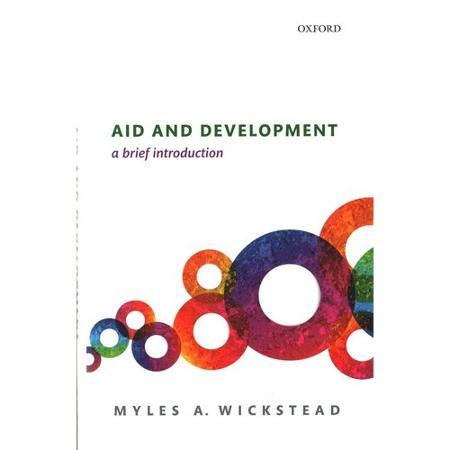 format: a 90 page basic introduction to the aid system from World War Two to the SDGs, followed by a 65 page compendium of 20 ‘key words and concepts’ from aid effectiveness to the UN system.
format: a 90 page basic introduction to the aid system from World War Two to the SDGs, followed by a 65 page compendium of 20 ‘key words and concepts’ from aid effectiveness to the UN system.
Another plus is the author: Myles is a charming UK government mandarin, with stints as ambassador in Ethiopia and running the office for the Commission for Africa (2004-5). He writes in the crisp, no frills style of ministerial briefings, guiding the reader through the bewildering labyrinth of the aid system’s evolution – a succession of high level meetings, working groups, summits and commissions that both nudge and reflect the shifting agenda. So the book talks us through the transitions from Cold War to conditionalities; from East-West to North-South; from G8 to G20; from national to global public goods; from giving aid to overall policy coherence for development.
The book brings home the crucial role of ‘critical junctures’ in shaping the aid system. These are born of the interaction of long term processes with trigger events, as when World War Two eclipsed British power amid surging calls for decolonization, or when the Global Financial Crisis combined with the rising power of the BRICS to produce a rapid transition from G8 to G20 as the global steering committee.
Reading the book got me thinking about the Overton Window, aka the range of ideas the public will accept at any given point. This evolves over time – sometimes quite rapidly, as in the case of attitudes to homosexuality and equal marriage.
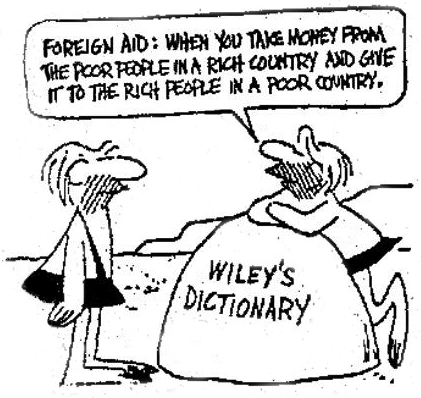
Not as true as it was in the Cold War
The connection with Myles is that people in NGOs live in constant danger of believing their own rhetoric. Because our echo chamber constantly bounces back our own voices on tax justice, gender rights, climate change or whatever, we can easily end up believing that decision makers are thinking and talking about the same stuff. Myles is a useful litmus test – if he says something that the activists are banging on about, it means it has least got as far as senior development officials. So when he concludes with a whole section on the limitations of GDP as a measure of well-being, that’s important – we’re getting somewhere.
Criticisms? It is very insider-ish. The procession of meetings, statements and agendas can get a little mind-numbing. I found myself yearning for some real life struggle. There is little discussion of how much (or why) developing country governments and others actually take any notice of aid conditions and all the other rules generated by the international aid circus (see my usual rant on the lack of evidence that the MDGs actually had much impact, and SDGs could go the same way). Oh and he repeats the meaningless ‘70% of the world’s poor are women’ stat, which shows he clearly doesn’t read this blog – unforgiveable.
But as a succinct introduction to the evolving aid system, it’s hard to beat.

September 13, 2015
Links I Liked
The main global Diabetes hot spots are in Middle East and Latin America – not Europe or US. [via Conrad  Hackett]
Hackett]
I’ve never met a meeting I couldn’t sleep through [h/t Chris Jochnick, zzzz]
Dani Rodrik argues that economics is a craft not a science: why economists should stop arguing about which is the ‘correct’ model and learn to apply different ones according to circumstances
Strikingly upbeat and religious take by Alex Evans  on the climate movement’s model of change and current challenges
on the climate movement’s model of change and current challenges
World Population Peak growth is long over (it peaked half a century ago). From Max Roser’s ‘Our World in Data’ web publication
Refugee crisis miscellany
What burden? Here’s one son of a Syrian migrant
Two Swedish entrepreneurs set up a ‘Refugee air’ airlift from 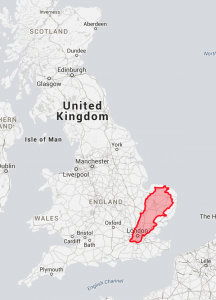 Turkey after listening to a Hans Rosling video. Respect to all involved.
Turkey after listening to a Hans Rosling video. Respect to all involved.
Lebanon has 1.2m Syrian refugees. Here’s Lebanon compared to the UK. [h/t Derek Payne]
5 history lessons (from previous crises) in how to deal with a refugee crisis
Remember the crying dad on a Greek beach? He looks a lot happier now he’s made it to Berlin
Way to go, Hungary: Hungarian journalist Petra Laszlo caught tripping fleeing Syrian refugees on camera

September 10, 2015
The Paradox of Britain’s role in Yemen’s unfolding disaster. Guest post by Mark Goldring
While all eyes are on Syria, a humanitarian disaster is fast unfolding in Yemen, and the UK government’s role is  ambiguous. Here Mark Goldring, Chief Executive of Oxfam GB, explains why it is challenging the government on the ‘paradox’ of the UK’s approach and introduces a new report, released today.
ambiguous. Here Mark Goldring, Chief Executive of Oxfam GB, explains why it is challenging the government on the ‘paradox’ of the UK’s approach and introduces a new report, released today.
Twenty one million people in Yemen are in urgent need of humanitarian assistance. This year the UK government has already given £55 million in humanitarian aid. But, at the same time the UK has continued to arm Saudi Arabia as they conduct airstrikes on Yemen which harm civilians.
The UK lobbied for years for the Arms Trade Treaty that came into force last December. But at the first test of the new law, it has turned a blind eye to mounting evidence of potential misuse of its weapons.

Millions of Yemenis are suffering from a water crisis and have to walk long distances to collect a few litres of water for their families, July 2015. Credit: Oxfam
There was a time when humanitarian agencies thought relatively little about the causes of the suffering they sought to relieve. Thirty years ago, the world responded to Ethiopia’s terrible famine with enormous generosity that saved thousands of lives. But like so many disasters before it, it was a crisis in the midst of conflict, and the world seemed to have no way of bringing it to an end.
The catastrophes of the ‘90s were no less terrible – the genocides in Rwanda and Bosnia perhaps worst of all. But humanitarians, journalists and others became more vocal that humanitarian aid was both vital and not enough at the same time. When Sadako Ogata, the UN High Commissioner for Refugees, said that ‘there are no humanitarian solutions to humanitarian problems,’ she spoke for many – determined, more than ever before, to tackle the causes as well as the consequences of human suffering.
Some of those causes were landmines and the other arms that flooded the conflicts of the time. One of my predecessors, David Bryer, who led Oxfam through most of the ‘90s, challenged us all in 1992 to tackle the scourge of landmines. And perhaps more than anyone else, the International Committee of the Red Cross galvanised humanitarian agencies to campaign for the international ban that was eventually agreed in 1997.
The UK was a laggard in that worldwide effort, far slower than many other governments to ban landmines – despite  the tremendous work of thousands in the UK including of course, famously, Princess Diana.
the tremendous work of thousands in the UK including of course, famously, Princess Diana.
But Oxfam’s passion was always to stop civilians being killed and injured, not whether they were being killed or injured by mines, missiles or any other weapon. That’s why we challenged the then Government when its ‘ethical dimension’ of foreign policy didn’t stop it sending arms to Zimbabwe or Colombia, and we condemned British arms exports to Indonesia at the height of its involvement in East Timor’s bloodshed in 1999. Indeed, as a result of pressure from Oxfam and many others, British arms sales to Indonesia were stopped for some time.
But for many of the last few years, we’ve been allies as often as critics of UK politicians of all sides, as Conservative, Labour and other parties have championed the call for an international Arms Trade Treaty, an idea we developed with Amnesty International and others in the Control Arms coalition launched in 2003, and which became international law in December 2014.

Houses destroyed in air strikes near Sana’a airport, Yemen, March 2015. Credit: Abbo Haitham
Politicians and aid agencies do not always agree, but the international campaign for that Treaty showed the UK and other governments working together with the Control Arms coalition of agencies that Oxfam continues to be part of.
Well before the Arms Trade Treaty (ATT) was incorporated into UK law last year, Britain had one of the toughest systems to licence arms exports in the world. Like the ATT, they’re designed to prevent British arms harming civilians or violating international humanitarian law, irrespective of the rights or wrongs of the conflict concerned. But the strongest regulations in the world don’t mean that they’re always applied well – and today’s Government is no more immune from that than the last one.
That’s why we’re throwing a spotlight today on how the UK has continued to arm Saudi Arabia since it began leading a coalition of Gulf countries in airstrikes on Yemen in March – to “defend the legitimate government” of President Hadi, it said, against Houthi rebels.
Yemen was already the poorest country in the Middle East, wracked by conflict and struggling in a transition to a more secure future. But since March, its devastating conflict has made matters extraordinarily worse. More than 1.4 million people have fled their homes; more than four out of five Yemenis need humanitarian aid. And all parties to Yemen’s conflict – including the Houthi armed groups as well as members of the Saudi-led coalition – have killed civilians in a manner that Amnesty International has said ‘could amount to war crimes’.
None of this acceptable. Even wars are meant to have laws, whatever the rights or wrongs of the warring parties. When Houthi artillery or Saudi airstrikes hit civilian areas, in both cases it is utterly wrong.
So what’s this to do with the UK? Well, on the one hand, the UK has given more than £55 million in new humanitarian aid since January this year, and the Development Secretary, Justine Greening, has warned that ‘millions face starvation’ as the conflict continues.
But there’s a paradox at the heart of the UK’s approach. While providing that vital aid, the Government has also authorised British bombs to be exported to the Saudi Air Force at a time when the UN and human rights groups have condemned all parties, the Saudi-led coalition and Houthis alike, of failing to meet their responsibilities under international humanitarian law to distinguish between civilians and military targets. And at the same time the UK continues its maintenance for the military equipment the UK has supplied in the past, with MoD military and civilian personnel, as well as BAE Systems staff stationed in Saudi Arabia to support the Royal Saudi Air Force.
That’s the distressing paradox that we’re highlighting today in our new briefing: British aid and British arms: a coherent approach to Yemen? Irresponsible arms exports are not the only things that sustain the terrible conflicts that cause so much of the humanitarian suffering that we face. But they are one. From Syria to South Sudan, Oxfam sees the human cost of those conflicts, which is why we often feel compelled not only to highlight that suffering but to call on all governments to prevent arms exports harming civilians by any side.
This blog was first posted on Oxfam Policy & Practice

Duncan Green's Blog
- Duncan Green's profile
- 13 followers




